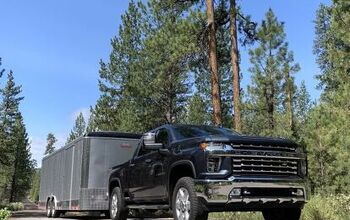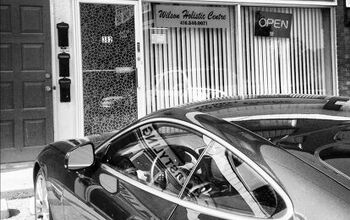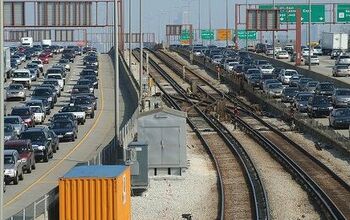Drive Fast — Responsibly
If speed killed, we would all be dead. After all, we are rotating around earth’s axis at up to 1038 mph (1670 kmh) and Earth is zipping around the sun at a whopping 66,660 mph (107,279 kmh). Speed’s not a problem. The problem is when we collide with objects that are moving at speeds that are substantially different than our own. Jack Baruth would have us believe that if we follow the advice he imparts in his “Maximum Street Speed Explained” series, that we can safely navigate American highways and byways, day or night while traveling at two or three times faster than the prevailing traffic norm. Unfortunately, his advice ranges from the obvious to absurdly dangerous (if he’s trying to be ironic or funny, he has very poor timing).
When the misguided double-nickel national speed limit was revoked, freeway accidents and fatalities declined. When this change went into effect, faster drivers tended not to drive much faster than they already were. However, the more compliant drivers sped up to the higher norms, narrowing the dissonance between the faster and slower drivers. Accidents declined even though the average speed on roads increased because traffic was moving at relatively constant and predictable speeds.
So when writing a series on how to drive faster, why not impart some advice on the best times and places to avoid traffic, animals and cops so we don’t make a menace of ourselves while indulging an automotive adrenaline fix? I guess addressing this didn’t occur to Jack. Here are a few examples of what we did get:
The obvious:
Your car needs to have its fluids at the appropriate levels, its tire pressures checked and its suspension components torqued. Your tires need full tread, no plugs, no camber wear.
But wait, there’s more:
You, as the driver, need to be alert, sober, rested, and ready to look all the way down the road.
This is brilliant stuff, folks! They really need to start teaching this to high school kids in driver’s ed.
Now for the absurdly dangerous:
Stay to the right . . . We come up on a car-to-be-passed from directly behind. We do this to attract the driver’s attention into his rear-view mirror.
And we mustn’t forget this pearl of wisdom:
Get in the habit of driving on the shoulder. We learn to drive on the shoulder because we’ll have to do it many times in the future, both to avoid panic-swerves and to pass recalcitrant lane-blockers.
Yes, the shoulder, a good place to pass because on US highways there is never any tire shredding debris that one cannot easily see and avoid while hurling along faster than 150 feet per second.
And for night driving, remember:
We don’t use the shoulder at night unless we have to. Confused deer . . . tend to hide out there.
Thank goodness that confused deer know the difference between the road shoulder and main lanes of the freeway. If they didn’t, it could be a problem for someone driving faster his ability to brake or maneuver around in the distance illuminated by headlights.
This next humdinger’s neither obvious nor absurdly dangerous. It is in a category all by itself. I’ll let you categorize it:
Cops expect you to speed in the left lane and they tend to look down the left lane. Stay to the right.
So cops are blind to cars traveling two to three times faster than the rest of traffic just because they are traveling in a lane 15 feet to the right. Uh huh. Maybe Ohio needs to get new cops with better eyesight. In Texas, they’re not so handicapped.
I could go on . . .
Here’s a clue, Jack: this ain’t Germany. American drivers tend to be poorly trained, distracted, easily startled, and unpredictable. Our highways aren’t maintained with the meticulousness required to make them Autobahn safe. And most of our roads lack the extra high fencing to keep large mammals from using the interstate as a game trail.
When traffic is traveling at a consistent pace and drivers are acting predictably, driving at high speeds on the freeway is a relatively low risk endeavor. But when some jackass thinks that he can weave through the flow at speeds 200 to 300 percent faster without introducing extreme risk to everyone else, no matter how skilled a driver he thinks he is, he is delusional.
Five years ago I attended the funeral of a friend who killed himself in a single vehicle accident while horsing around on his motorcycle. At least he had the decency not to involve other motorists by utilizing seldom-traveled country roads. Of course, that was little consolation to his devastated wife and the autistic child.
If you must prove your mad driving skills, join a club and take it to a track.
More by William C Montgomery
Latest Car Reviews
Read moreLatest Product Reviews
Read moreRecent Comments
- Joe65688619 Under Ghosn they went through the same short-term bottom-line thinking that GM did in the 80s/90s, and they have not recovered say, to their heyday in the 50s and 60s in terms of market share and innovation. Poor design decisions (a CVT in their front-wheel drive "4-Door Sports Car", model overlap in a poorly performing segment (they never needed the Altima AND the Maxima...what they needed was one vehicle with different drivetrain, including hybrid, to compete with the Accord/Camry, and decontenting their vehicles: My 2012 QX56 (I know, not a Nissan, but the same holds for the Armada) had power rear windows in the cargo area that could vent, a glass hatch on the back door that could be opened separate from the whole liftgate (in such a tall vehicle, kinda essential if you have it in a garage and want to load the trunk without having to open the garage door to make room for the lift gate), a nice driver's side folding armrest, and a few other quality-of-life details absent from my 2018 QX80. In a competitive market this attention to detai is can be the differentiator that sell cars. Now they are caught in the middle of the market, competing more with Hyundai and Kia and selling discounted vehicles near the same price points, but losing money on them. They invested also invested a lot in niche platforms. The Leaf was one of the first full EVs, but never really evolved. They misjudged the market - luxury EVs are selling, small budget models not so much. Variable compression engines offering little in terms of real-world power or tech, let a lot of complexity that is leading to higher failure rates. Aside from the Z and GT-R (low volume models), not much forced induction (whether your a fan or not, look at what Honda did with the CR-V and Acura RDX - same chassis, slap a turbo on it, make it nicer inside, and now you can sell it as a semi-premium brand with higher markup). That said, I do believe they retain the technical and engineering capability to do far better. About time management realized they need to make smarter investments and understand their markets better.
- Kwik_Shift_Pro4X Off-road fluff on vehicles that should not be off road needs to die.
- Kwik_Shift_Pro4X Saw this posted on social media; “Just bought a 2023 Tundra with the 14" screen. Let my son borrow it for the afternoon, he connected his phone to listen to his iTunes.The next day my insurance company raised my rates and added my son to my policy. The email said that a private company showed that my son drove the vehicle. He already had his own vehicle that he was insuring.My insurance company demanded he give all his insurance info and some private info for proof. He declined for privacy reasons and my insurance cancelled my policy.These new vehicles with their tech are on condition that we give up our privacy to enter their world. It's not worth it people.”
- TheEndlessEnigma Poor planning here, dropping a Vinfast dealer in Pensacola FL is just not going to work. I love Pensacola and that part of the Gulf Coast, but that area is by no means an EV adoption demographic.
- Keith Most of the stanced VAGS with roof racks are nuisance drivers in my area. Very likely this one's been driven hard. And that silly roof rack is extra $'s, likely at full retail lol. Reminds me of the guys back in the late 20th century would put in their ads that the installed aftermarket stereo would be a negotiated extra. Were they going to go find and reinstall that old Delco if you didn't want the Kraco/Jenson set up they hacked in?


































Comments
Join the conversation